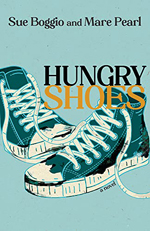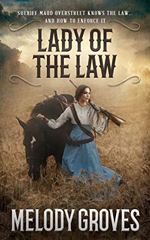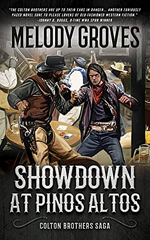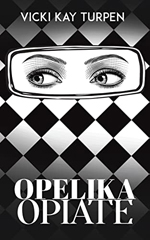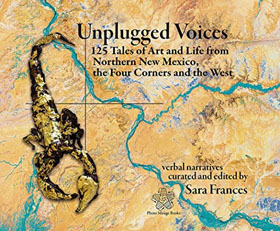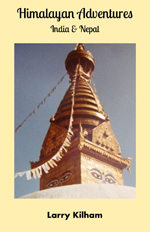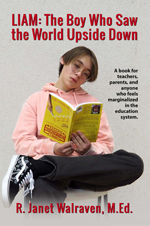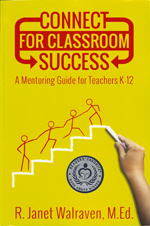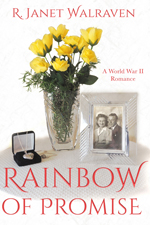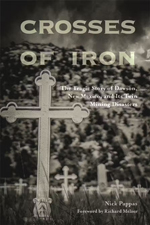Author Dale Garratt is a New Mexico native and a longtime educator who has taught in schools across the United States as well as in South Korea. His travel experience and geopolitical interests informed the writing of his debut novel, The Peace Road: A High-stakes Geopolitical Thriller (August 2023), which is described as “an absolute nail-biter, fast-paced with cutting-edge twists and turns.” Look for Dale on his website at DaleGarratt.com, on Facebook and Twitter/X, and on his Amazon author page.
 Dale, what would you like readers to know about the story you tell in The Peace Road?
Dale, what would you like readers to know about the story you tell in The Peace Road?
The threat of a hypersonic missile attack by North Korea is even stronger now than it was two years ago, when I started writing the book.
The book starts with North Korea launching a hypersonic ICBM at the U.S., narrowly missing Los Angeles. This triggers a series of events leading to naval battles between the U.S. and China, which is the shadow behind North Korea. An underlying theme is the concept of a peace road: a literal road that could facilitate peaceful relations in East Asia. The novel also explores the path to peace in romantic relationships.
Who are your main characters and why will readers connect with them?
Ric O’Malley is the protagonist, a top quantum physicist at Sandia Laboratories and a Medal of Honor recipient. He is a really good person, and I think the protagonist in a thriller should be. He has a great sense of humor, a remarkable adaptability to varied situations big and small, and truly cares about the lives of others.
Ric’s wife Marie, a high school science teacher, understands that her husband is involved in events of national and international consequence but equally values her role in educating students. They have a great marriage but face a serious challenge in the course of the book. I think that many readers will relate to the realities of relationships and a career-life balance that the O’Malleys go through.
U.S. President Sarah Jacobsen is a tough leader, and at the same time is able to look at concepts out of the box. She may shed light on what it takes to make a great president.
Do you share traits with your protagonist Ric O’Malley?
Like most people, I like to think I’m a good person! I’m a geopolitical news addict. I’ve taught at several high schools in Albuquerque, and I am licensed to teach science. Ric has a PhD in physics and I have a PhD from University of New Mexico (UNM) in language, literacy and sociocultural studies. Like Ric, I have a very good marriage. But over the years we have experienced and resolved a challenge that occurs in many intimate relationships.
Describe one or more of the main settings.
Albuquerque plays a central role. Ric lives here and his team is based at Sandia Labs. In the course of events, Ric is attacked twice in Albuquerque by would-be assassins. Of course, East Asia is a main setting, particularly North Korea, South Korea and Japan. Also, the Western Pacific Ocean, where naval battles between the U.S. and China take place.
How did you approach your research for The Peace Road?
Fortunately, I have personal experience with East Asia. We lived in South Korea for eight years, teaching English to middle school and then university students. I was able to officially stand on North Korea soil with students at the Panmunjom Village on the 38th Parallel. I continue to read two South Korean newspapers and keep up with what’s happening in politics and the economy. I delve into online information, but I make it a point to read sites that present different views. Triangulation, as we teachers say.
One priority for me was making sure that the military technology used by all five countries in the book was accurate. There are great .mil and .gov sites for U.S. technology and very good intelligence about China’s military technology. For North Korea you can find “propaganda” websites and read a lot between the lines about its military, economy and politics. Of course, anything you are really interested in as an author can turn into a rabbit hole. That’s something you always have to look out for.
In 2022 I attended the Quantum New Mexico Symposium at UNM where UNM, Sandia Labs, and the Air Force Research Laboratory were featured. Participants were able to actually visit Sandia and see the latest research in quantum computing. We asked questions of the researchers themselves — it was the kind of thing you can more easily do in New Mexico than in other states.
What obstacles did you face when writing about the technology used in your novel?
The main problem in writing about quantum computer research is that it is advancing so fast! It’s fascinating but a challenge to keep up with. Yesterday’s Business Outlook (March 24, 2024) in the Albuquerque Journal featured an article that could have been written about Ric O’Malley. It was an interview with Jake Douglass of Sandia about quantum research there. He says in part, “[Quantum technology] is a field where we’re [NM] truly world leaders.”
What part do beta readers or critique groups play in your writing process?
I sent the first draft and new drafts to more than a dozen friends who are good readers and/or writers. They gave me some valuable and honest suggestions as well as many practical editing suggestions. Getting several beta readers is, for me, more helpful than just relying on a couple.
Tell us about your writing process or your writing routine. Are you a plotter or a pantser?
Both. I start with the overall shape of the book. While I’m doing that, I freewrite almost every day, putting down material that can make up chapters. Then I move from shaping the book to writing an outline. Then chapters fall into place in the outline. I write better in the mornings, and I make it a practice to schedule appointments and errands in the afternoons.
Who are your favorite authors, and what do you admire most about their writing?
I love Louis L’Amour’s westerns and Georgette Heyer’s Regency romances. In the thriller genre, I really like Tom Clancy — the actual Tom Clancy! David Baldacci’s Memory Man series has a lot to teach writers. My favorite author is Daniel Silva. His thrillers are almost always exciting, and the way he dives into a European locale is not only entertaining but also informative. One example is The Confessor with its fascinating deep dive into the Vatican and the Catholic Church. But like most geopolitical thrillers he has a European setting. It’s time now to include settings in Asia.
What writing projects are you working on now?
I’m writing book two of the Peace Road Trilogy. It takes place in North Africa and the Middle East. Religious, economic, political, and other major threads in this most ancient part of the Earth are woven together. It’s very exciting to me, and I hope it will be so for readers.
Is there anything else you’d like readers to know?
In the midst of current geopolitical turmoil and conflict, there is hope. My book ultimately shows a realistic, doable path toward a permanent peace on the Korean Peninsula. And a real peace road there could be a key component.
 Su Lierz writes dark fiction, short story fiction, and personal essays. Her short story “Twelve Days in April,” written under the pen name Laney Payne, appeared in the 2018 SouthWest Writers Sage Anthology. Su was a finalist in the 2017 and 2018 Albuquerque Museum Authors Festival Writing Contest. She lives in Corrales, New Mexico, with her husband Dennis.
Su Lierz writes dark fiction, short story fiction, and personal essays. Her short story “Twelve Days in April,” written under the pen name Laney Payne, appeared in the 2018 SouthWest Writers Sage Anthology. Su was a finalist in the 2017 and 2018 Albuquerque Museum Authors Festival Writing Contest. She lives in Corrales, New Mexico, with her husband Dennis.



 KL Wagoner (writing as Cate Macabe) is the author of This New Mountain: a memoir of AJ Jackson, private investigator, repossessor, and grandmother. Kat has a speculative fiction blog at
KL Wagoner (writing as Cate Macabe) is the author of This New Mountain: a memoir of AJ Jackson, private investigator, repossessor, and grandmother. Kat has a speculative fiction blog at 